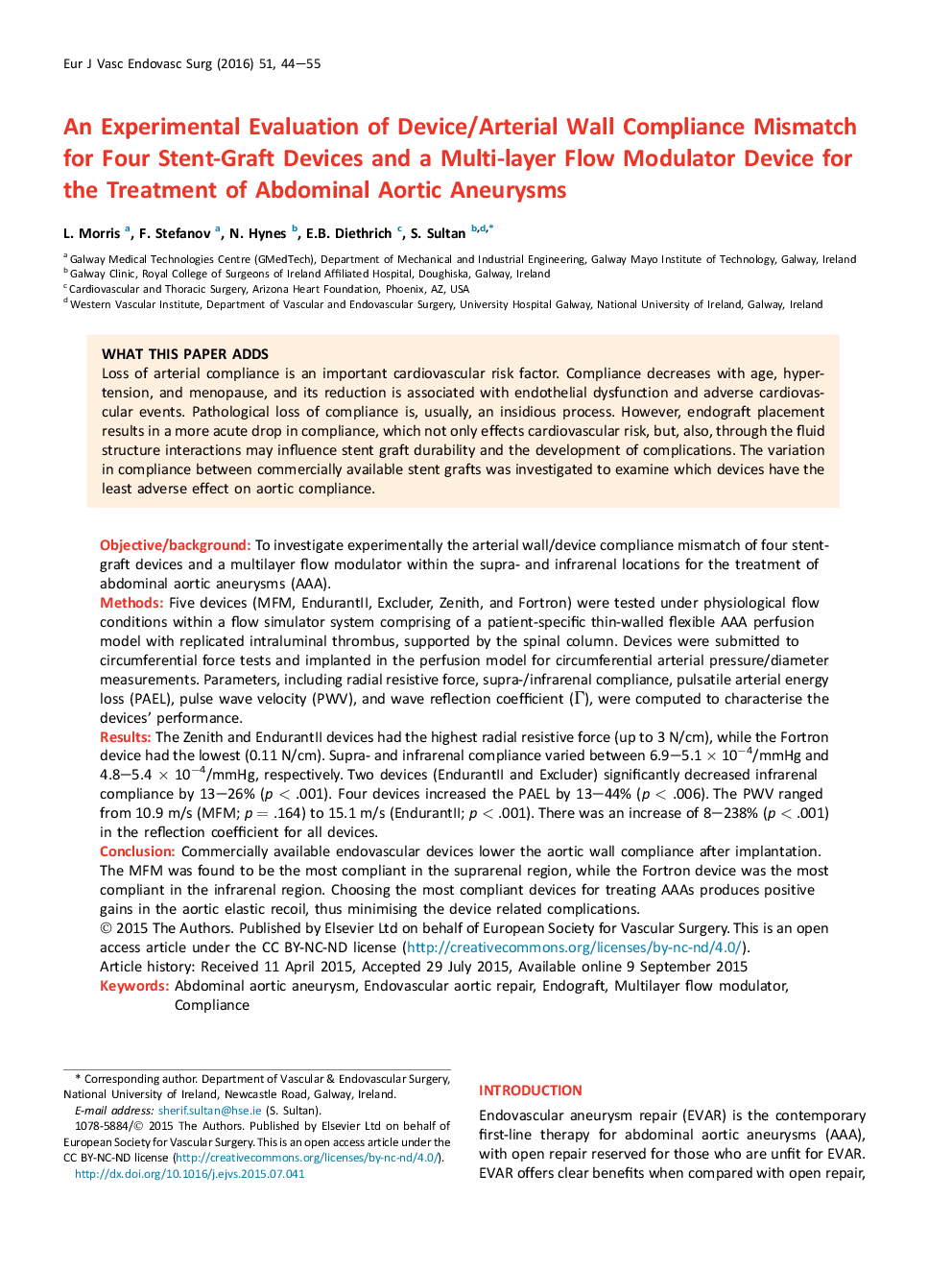| کد مقاله | کد نشریه | سال انتشار | مقاله انگلیسی | نسخه تمام متن |
|---|---|---|---|---|
| 5957215 | 1575434 | 2016 | 12 صفحه PDF | دانلود رایگان |
Objective/backgroundTo investigate experimentally the arterial wall/device compliance mismatch of four stent-graft devices and a multilayer flow modulator within the supra- and infrarenal locations for the treatment of abdominal aortic aneurysms (AAA).MethodsFive devices (MFM, EndurantII, Excluder, Zenith, and Fortron) were tested under physiological flow conditions within a flow simulator system comprising of a patient-specific thin-walled flexible AAA perfusion model with replicated intraluminal thrombus, supported by the spinal column. Devices were submitted to circumferential force tests and implanted in the perfusion model for circumferential arterial pressure/diameter measurements. Parameters, including radial resistive force, supra-/infrarenal compliance, pulsatile arterial energy loss (PAEL), pulse wave velocity (PWV), and wave reflection coefficient (Î), were computed to characterise the devices' performance.ResultsThe Zenith and EndurantII devices had the highest radial resistive force (up to 3 N/cm), while the Fortron device had the lowest (0.11 N/cm). Supra- and infrarenal compliance varied between 6.9-5.1 Ã 10â4/mmHg and 4.8-5.4 Ã 10â4/mmHg, respectively. Two devices (EndurantII and Excluder) significantly decreased infrarenal compliance by 13-26% (p < .001). Four devices increased the PAEL by 13-44% (p < .006). The PWV ranged from 10.9 m/s (MFM; p = .164) to 15.1 m/s (EndurantII; p < .001). There was an increase of 8-238% (p < .001) in the reflection coefficient for all devices.ConclusionCommercially available endovascular devices lower the aortic wall compliance after implantation. The MFM was found to be the most compliant in the suprarenal region, while the Fortron device was the most compliant in the infrarenal region. Choosing the most compliant devices for treating AAAs produces positive gains in the aortic elastic recoil, thus minimising the device related complications.
Journal: European Journal of Vascular and Endovascular Surgery - Volume 51, Issue 1, January 2016, Pages 44-55
